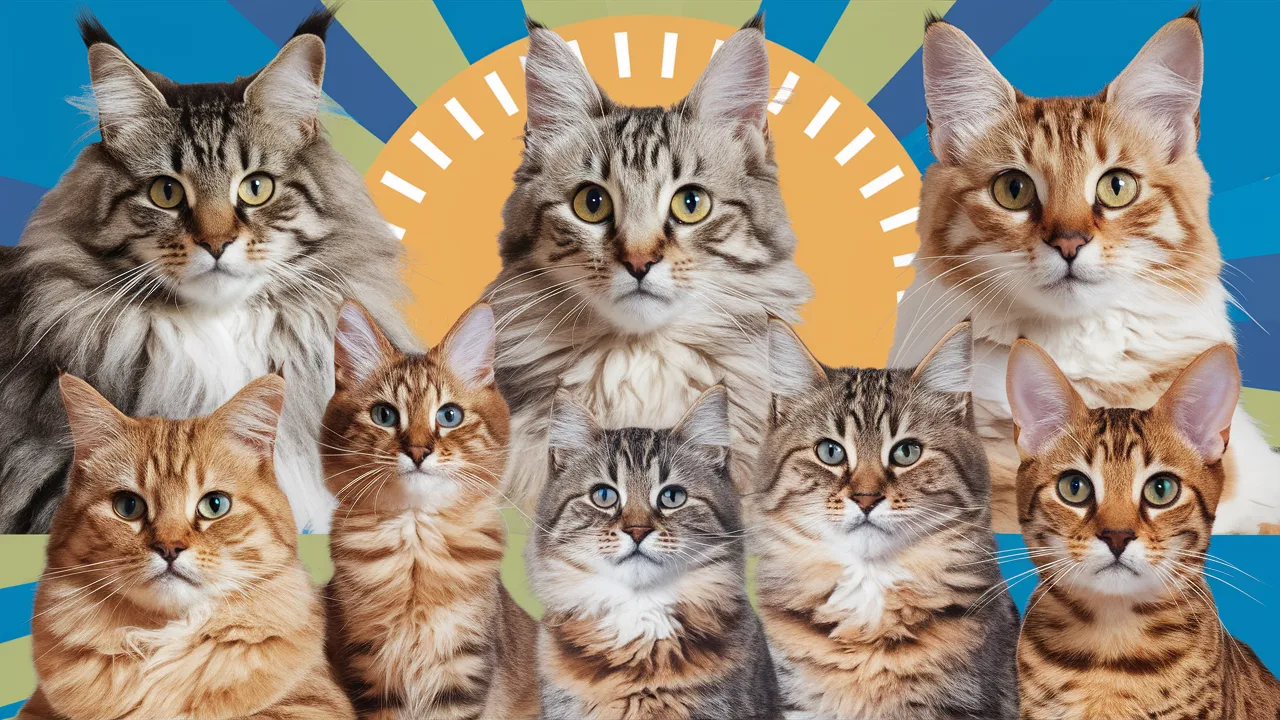Discover the Largest cat Breeds in the World
Introduction
Who doesn’t love cats? They’re fluffy, affectionate, and have that unique charm that can make anyone’s day better. But when it comes to cat breeds, the larger varieties often capture a special place in our hearts. There’s something incredibly majestic and intriguing about large cat breeds. Whether it’s their impressive size, their regal demeanor, or their fascinating history, big cats have a way of drawing people in. Let’s dive into the fascinating world of large cat breeds and explore what makes them so special.
What Defines a Large Cat Breed?
When we talk about large cat breeds, we’re generally referring to those cats that are significantly bigger than your average house cat. These felines can weigh anywhere from 15 to 25 pounds or more, and they often have longer bodies, larger paws, and bushier tails.
Size and Weight
Large cat breeds are typically defined by their size and weight. While the average domestic cat weighs between 8 to 10 pounds, large cat breeds can weigh twice that amount. Maine Coons, for example, can weigh up to 25 pounds or more, while Savannah Cats can stand as tall as 17 inches at the shoulder.
Characteristics and Traits
Besides their size, large cat breeds often share other common traits. They tend to have robust, muscular bodies, large heads, and thick fur. Many of these breeds are also known for their friendly and sociable personalities, making them great companions for families.
The History of Large Cat Breeds
Large cat breeds have a rich history that spans centuries. These cats have been revered and admired in various cultures around the world. From the Vikings who loved the Norwegian Forest Cat to the Russian aristocrats who favored the Siberian Cat, these majestic felines have always held a special place in human society.
Origins and Evolution
The origins of large cat breeds can be traced back to different parts of the world. For instance, the Maine Coon is believed to have originated in North America, while the Siberian Cat hails from the cold forests of Russia. Each breed has evolved to adapt to its environment, developing unique characteristics that help it survive and thrive.
The Role of Large Cats in Different Cultures
Large cats have played significant roles in various cultures. In ancient Egypt, cats were revered as gods and were often depicted in art and sculpture. In Norse mythology, the Norwegian Forest Cat was associated with the goddess Freyja, who was said to travel in a chariot pulled by these large, sturdy cats.
Popular Large Cat Breeds
There are several popular large cat breeds, each with its own unique characteristics and charm. Let’s examine a few of the more well-known ones in more detail.
Maine Coon: The Gentle Giant
One of the biggest and most well-liked cat breeds worldwide is the Maine Coon.. Known for their friendly and gentle nature, these cats are often referred to as “gentle giants.”
Physical Characteristics
Maine Coons have a distinctive appearance with their large, tufted ears, bushy tails, and thick fur. They come in a variety of colors and patterns, and their fur is water-resistant, which helps them survive in harsh weather conditions.
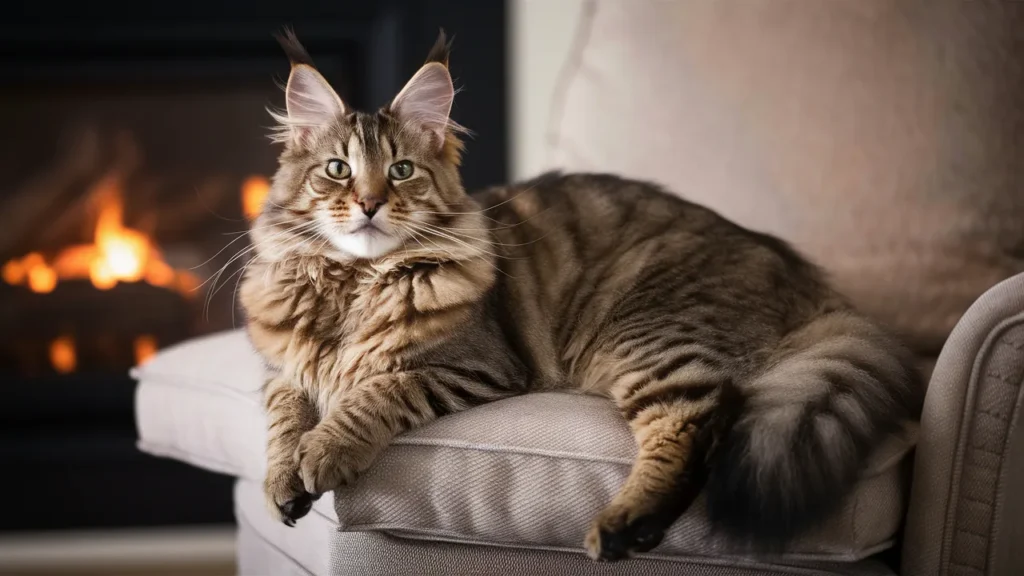
Personality and Behavior
Friendly and gregarious temperament is a well-known trait of Maine Coons. They are often described as “dog-like” because they enjoy following their owners around and are very playful. Despite their size, they are gentle and good with children and other pets.
Care Requirements
Maine Coons’ thick fur means they need to be groomed frequently. They also need a balanced diet to maintain their health and prevent obesity. Regular vet check-ups are essential to monitor their health, especially since they are prone to certain genetic conditions.
Savannah Cat: The Exotic Companion
Savannah Cats are a cross between a domestic cat and a serval, a wild African cat. This gives them a unique and exotic appearance that sets them apart from other domestic breeds.
Physical Characteristics
Savannah Cats have long legs, large ears, and a slender body. They often have striking coat patterns with spots and stripes, resembling their wild ancestors.
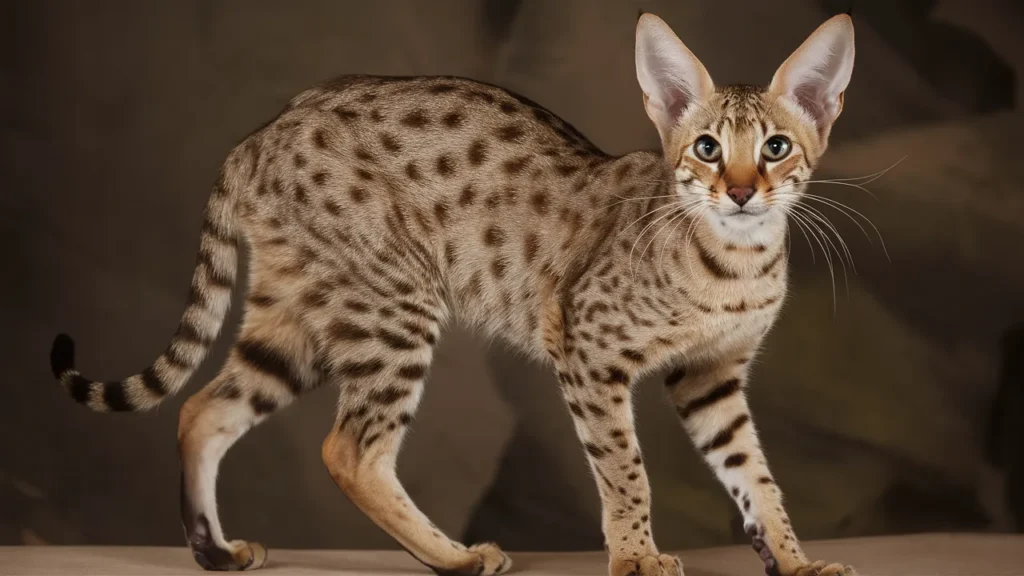
Personality and Behavior
These cats are very active and playful. They are known for their high energy levels and love for climbing and exploring. Savannah Cats are also very intelligent and can be trained to perform various tricks.
Care Requirements
Savannah To be happy, cats require a lot of mental and physical stimulation. They need a diet rich in protein to maintain their busy way of living. Regular playtime and interactive toys are essential to prevent boredom.
Ragdoll: The Affectionate Furball
Ragdolls are renowned for their loving and peaceful disposition. . They are often called “puppy cats” because of their tendency to go limp when picked up, just like a ragdoll.
Physical Characteristics
Ragdolls have large, muscular bodies with soft, semi-long fur. They typically have blue eyes and a color-pointed coat, which means their ears, face, paws, and tail are darker than the rest of their body.
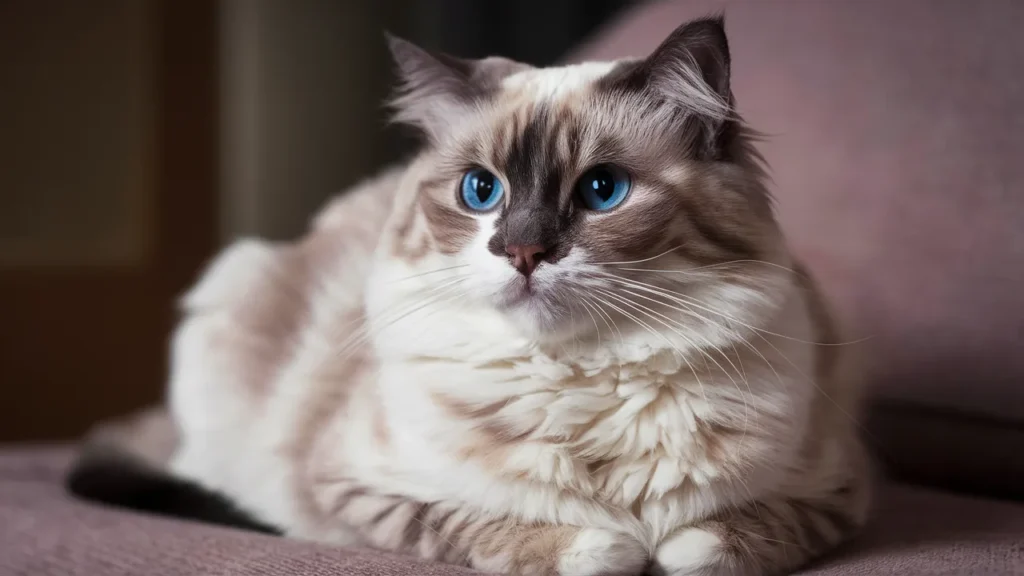
Personality and Behavior
Ragdolls are incredibly gentle and loving. They enjoy being held and cuddled, making them excellent lap cats. They are also very social and get along well with children and other pets.
Care Requirements
Ragdolls require regular grooming to keep their fur from matting. They also need a balanced diet to maintain their health. Regular vet visits are important to monitor for any health issues.
Norwegian Forest Cat: The Viking Cat
The Norwegian Forest Cat is a robust and hardy breed that hails from the cold forests of Norway. These cats are known for their thick fur and strong bodies, which helped them survive in harsh climates.
Physical Characteristics
Norwegian Forest Cats have a thick double coat that is water-resistant. They have large, tufted ears and bushy tails, giving them a wild and rugged appearance.
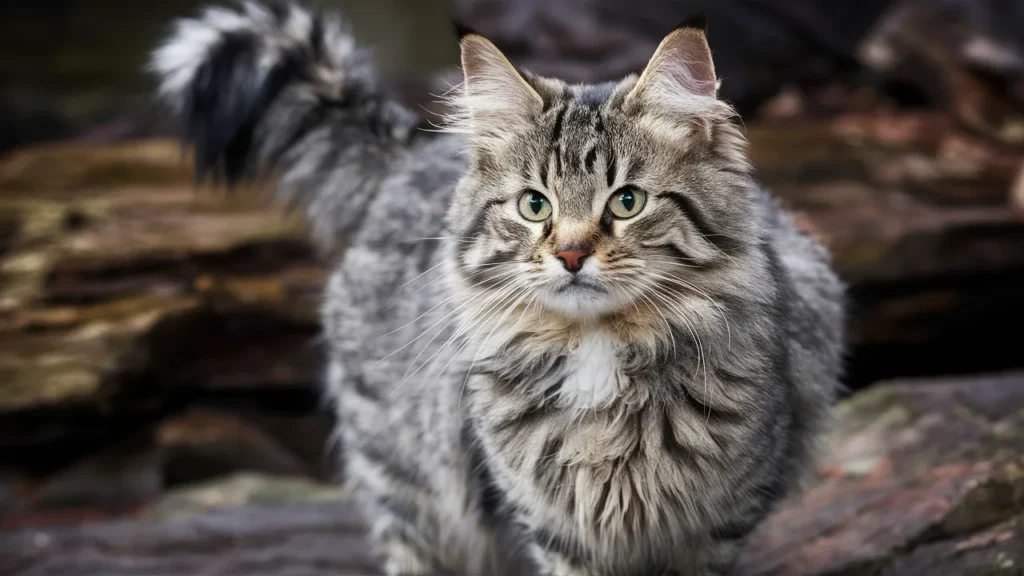
Personality and Behavior
These cats are friendly and social, but they also enjoy their independence. They enjoy exploring their surroundings and are skilled climbers. Norwegian Forest Cats are also known for their playful and curious nature.
Care Requirements
Because of their dense fur, Norwegian Forest Cats need frequent brushing to avoid matting. They need a diet that supports their active lifestyle and regular vet check-ups to ensure their health.
Siberian Cat: The Hypoallergenic Marvel
The Siberian Cat is a large, robust breed that comes from the forests of Russia. They are known for their thick fur and hypoallergenic properties, making them a good choice for people with allergies.
Physical Characteristics
Siberian Cats have a thick, triple-layer coat that keeps them warm in cold weather. They have large, muscular bodies and come in a variety of colors and patterns.
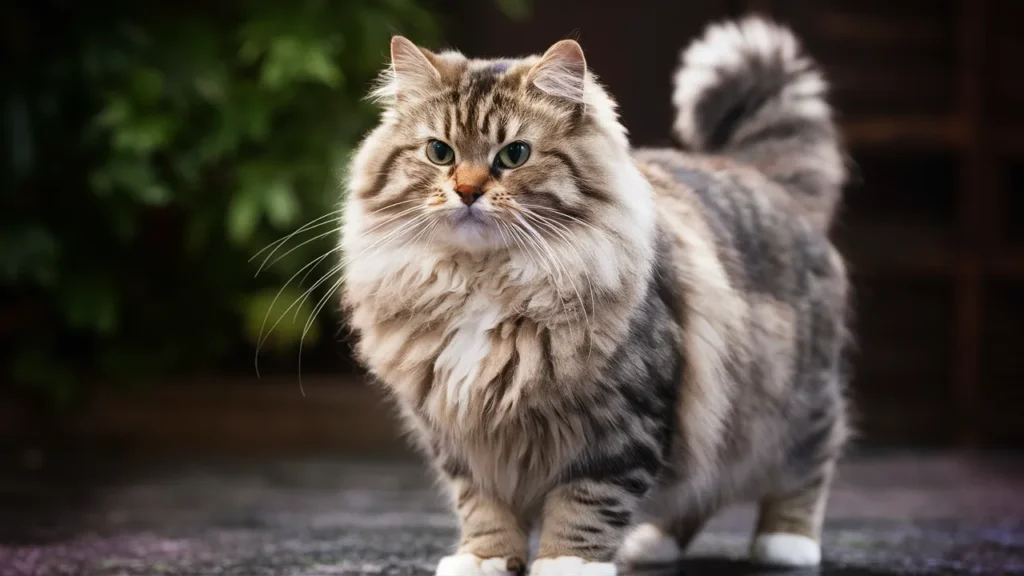
Personality and Behavior
These cats are very affectionate and social. They get along well with kids and other animals and love being around people.Siberian Cats are also very playful and love to climb and explore.
Care Requirements
Siberian cats need frequent brushing in order to maintain the health of their fur. They need a balanced diet to support their health and regular vet visits to monitor for any health issues.
Bengal Cat: The Little Leopard
Bengal Cats are known for their striking appearance, which resembles that of a wild leopard. They are a cross between domestic cats and the Asian leopard cat.
Physical Characteristics
Bengal Cats have a sleek, muscular body with a short coat that comes in various patterns, including spots and marbling. Their fur is often glittered, giving it a shiny appearance.
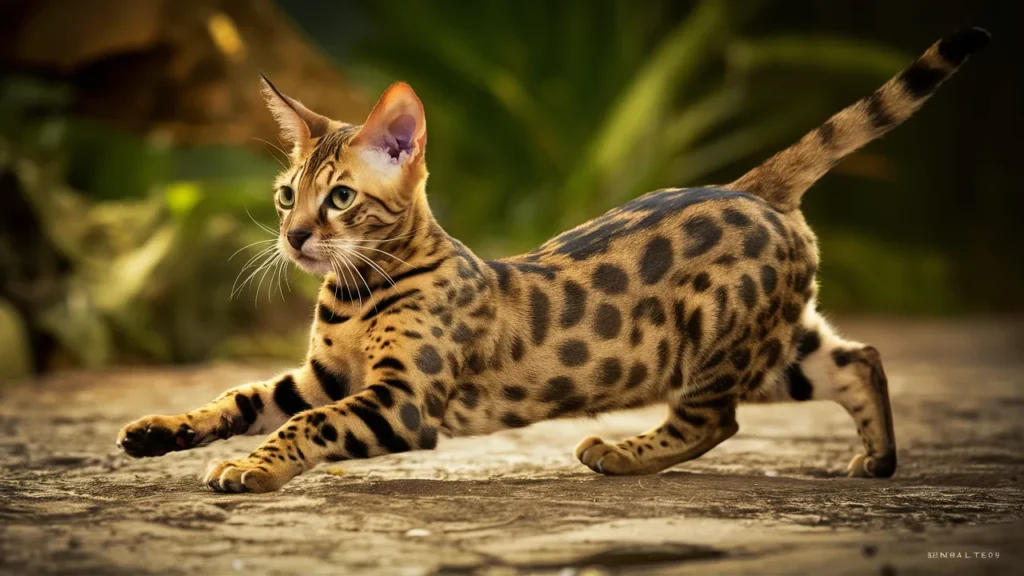
Personality and Behavior
Bengals are very active and playful. They are known for their high energy levels and love for climbing and exploring. They are also very intelligent and can be trained to perform various tricks.
Care Requirements
Bengal cats require a great deal of mental and physical stimulation to be content. A diet rich in protein is necessary to sustain their active lifestyle.Regular playtime and interactive toys are essential to prevent boredom.
Health Considerations for Large Cat Breeds
Large cat breeds are generally healthy, but they can be prone to certain health issues. It’s critical to recognize these possible issues and take precautions against them.
Common Health Issues
Some common health issues in large cat breeds include hip dysplasia, heart disease, and obesity. Frequent veterinary examinations are necessary to identify any possible issues early on.
Preventative Care
Preventative care is crucial for keeping your large cat healthy. This includes regular vet visits, a balanced diet, and plenty of exercise. Keeping your cat’s weight in check and providing them with regular mental stimulation can also help prevent health issues.
Feeding Large Cat Breeds
Large cat breeds have specific dietary needs that must be met to keep them healthy and happy.
Dietary Needs
These cats require a diet that is high in protein to support their large muscles and active lifestyle. It’s important to choose high-quality cat food that meets their nutritional needs.
Best Foods and Feeding Schedules
Feeding your large cat breed two to three times a day is generally recommended. Make sure to provide them with fresh water at all times. Consult your vet to determine the best diet and feeding schedule for your specific cat.
Grooming Large Cat Breeds
Grooming is an essential part of caring for large cat breeds. Regular grooming helps keep their fur in good condition and prevents health issues.
Grooming Tips and Tools
Regular brushing will help minimize shedding and avoid matting in your cat’s fur. Use grooming tools like a slicker brush and a comb to remove loose hair and keep their coat looking healthy.
Dealing with Shedding and Hairballs
Large cats with thick fur are prone to shedding and hairballs. Regular grooming can help reduce shedding, and providing your cat with hairball remedies can help manage this issue.
Training and Socializing Large Cats
Training and socializing your large cat is important for their overall well-being.
Training Tips
Use positive reinforcement techniques to train your cat. Reward them with treats and praise when they display good behavior. Be patient and consistent with your training efforts.
Socialization Techniques
Expose your cat to different environments, people, and other animals to help them become well-adjusted and social. Gradual exposure and positive experiences can help your cat feel more comfortable in new situations.
Living with Large Cat Breeds
Adapting your home to accommodate a large cat breed can help ensure their comfort and happiness.
Adapting Your Home
Provide your cat with plenty of space to roam and explore. Invest in sturdy cat trees and climbing structures to satisfy their natural instincts.
Creating a Cat-Friendly Environment
Provide your cat with a secure and engaging environment.Provide them with plenty of toys, scratching posts, and cozy spots to relax.
Conclusion
Large cat breeds are truly fascinating creatures. Their impressive size, unique characteristics, and friendly personalities make them wonderful companions. Whether you choose a Maine Coon, a Savannah Cat, or any other large breed, you’re sure to enjoy the special bond that comes with sharing your home with one of these majestic felines. All cats can drink milk also.
FAQs
What is the largest domestic cat breed?
The Maine Coon is generally considered the largest domestic cat breed, with some individuals weighing up to 25 pounds or more.
Are large cats more aggressive than smaller cats?
Not necessarily. Many large cat breeds are known for their friendly and gentle nature. Aggression can depend more on individual temperament and socialization.
Do large cat breeds require special diets?
Large cats often need a diet that is high in protein to support their larger muscles and active lifestyle. Always consult your vet for dietary recommendations specific to your cat.
How much exercise do large cats need?
Large cats are often very active and need plenty of exercise to stay healthy. Providing them with interactive toys, climbing structures, and regular playtime can help meet their exercise needs.
Are large cat breeds good with children?
Many large cat breeds are known for their friendly and gentle nature, making them good companions for children. However, it’s always important to supervise interactions between cats and young children to ensure safety for both.
